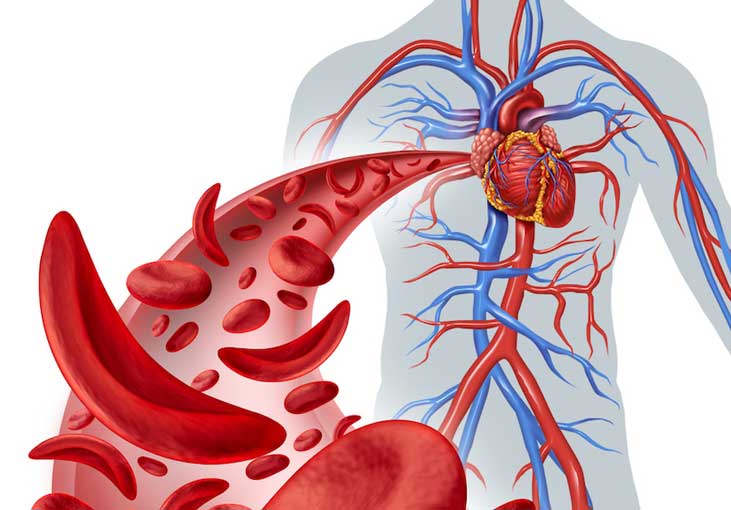Sickle cell trait (SCT) is not a sickness. SCT indicates that a person has a single copy of the “sickle hemoglobin gene” mutation linked to “sickle cell disease” (SCD). People with SCT generally lead healthy lives with no symptoms, but they could possibly experience health complications such as exercise-related collapse and muscle injury.
Sickle cell trait is different from sickle cell disease
Although SCT is fairly common, not much is known about its impact on a carrier’s day-to-day life. Three million people in the United States are living with SCT and almost all are unaware they carry the gene. SCT is most common in people of African descent: One in 13 African Americans and 4 in 10 West Africans carry the SCT gene. Although rare, people from other racial and ethnic backgrounds can also carry the SCT gene. One in 183 Hispanic Americans and one in 625 Caucasian Americans have SCT.
Sickle cell disease is the condition that occurs when both parents pass the sickle hemoglobin gene to their child. SCD causes red blood cells to develop with a crescent-moon shape or “sickle” form. Normal red blood cells are round, flexible, and easily move through your arteries and veins. In people with SCD, their red blood cells can stick together because they are crescent-shaped, rigid, and stiff. These stuck-together cells can clog veins and arteries, blocking blood flow to different parts of their body.
Exertional collapse associated with sickle cell trait (ECAST) and symptoms
The term “exercise collapse associated with sickle cell trait” (ECAST) was introduced during the Consortium for Health and Military Performance (CHAMP) Summit on sickle cell trait at the Uniformed Service University (USU) in 2011.The summit was held in response to sudden, exertion-related military deaths. Following the summit, there was an increase in acknowledgment of the importance of addressing the dangers related with exercise collapse in individuals with sickle cell trait.
In rare cases, heavy physical work, such as intense exercise in high temperatures, can trigger an ECAST event, with severe complications. ECAST can present as a combination of two or more of the following symptoms:
- Unusual muscle weakness, muscle swelling, and pain (most commonly in legs and lower back)
- Increase in normal body temperature (normal range is 97–99°F)
- Rhabdomyolysis (rhabdo)*
- Collapse or fainting
- Recurrent cramping
The most obvious signs of ECAST are muscle discomfort and weakness that get worse over time, particularly in the thigh muscles, buttocks, and low back. If medical personnel suspect an individual has ECAST, they should inform emergency department personnel during transport.
*Rhabdomyolysis (rhabdo) is a condition where your muscles break down. It can lead to severe injury or death. An ECAST event can cause rhabdo to set in very quickly. Rhabdo casualties sometimes have cola-colored urine, but not always, and must be immediately transported to a hospital for IV fluids, electrolytes, and heart-function monitoring.
Precautions for serving with SCT
SCT will not disqualify you from military service. You can lead a completely normal life, serve in the military, and participate in sports and strength training.
Be sure to stay hydrated, take frequent breaks when participating in high-intensity workouts or activities, and talk to your healthcare provider about the condition.
Exertional collapse associated with sickle cell trait study
USU is studying Service Members and civilians with SCT to determine who is at greatest risk for ECAST and if their blood has markers that may indicate their risk level. Findings from the study should enable understanding of ECAST’s complex mechanisms and inform those with SCT about their risk for an ECAST event.
USU is currently enrolling civilian and active-duty African-American men and women aged 18–45 that have SCT with or without a history of exercise collapse. The study requires participants to provide their medical history, complete a questionnaire, and have blood drawn. Please follow this link if you would like participate in CHAMP's ECAST research study.





